
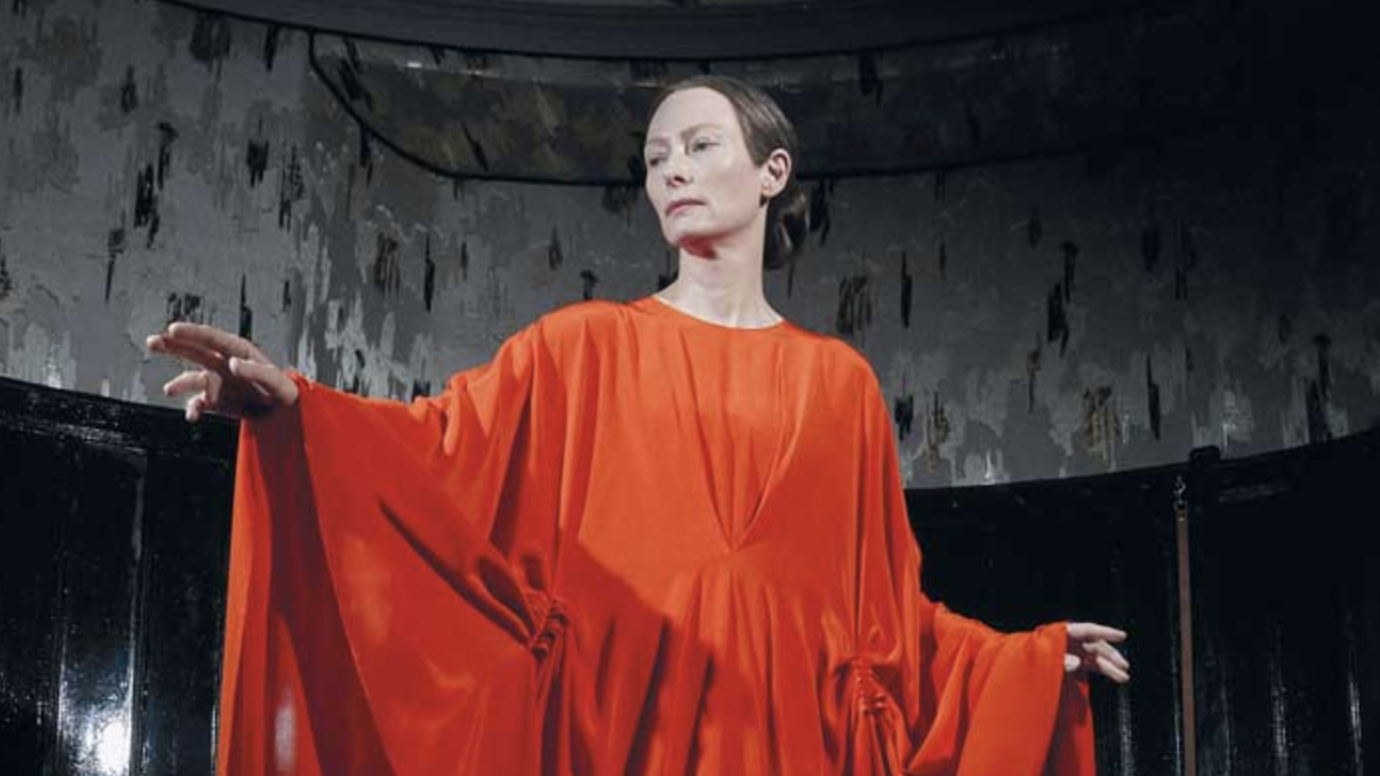
It has recently come to my attention that “Spooky Season” is now a thing. Apparently, this is what we’re calling the weeks leading up to Halloween, when we’re all supposed to binge candy corn and late-night horror flicks. But I’ve always thought of October as the season of the witch. (Hat-tip to Donovan.) As the leaves begin to fall and jack-o’-lanterns begin to appear on doorsteps, I’m inclined to brew a pot of spiked apple cider—or a stiff martini—and settle in for a marathon of witchy films to get in the mood for All Hallows’ Eve.
The advantage to this approach, of course, is that movies about witches come in a variety of different tones and genres. You want romance? Comedy? Camp? Horror? There’s a witchy movie out there for each. And they tend to be stylish experiences, inventive in both their approach to the themes of magic and their depictions of powerful supernatural women. Here are five all-time faves.
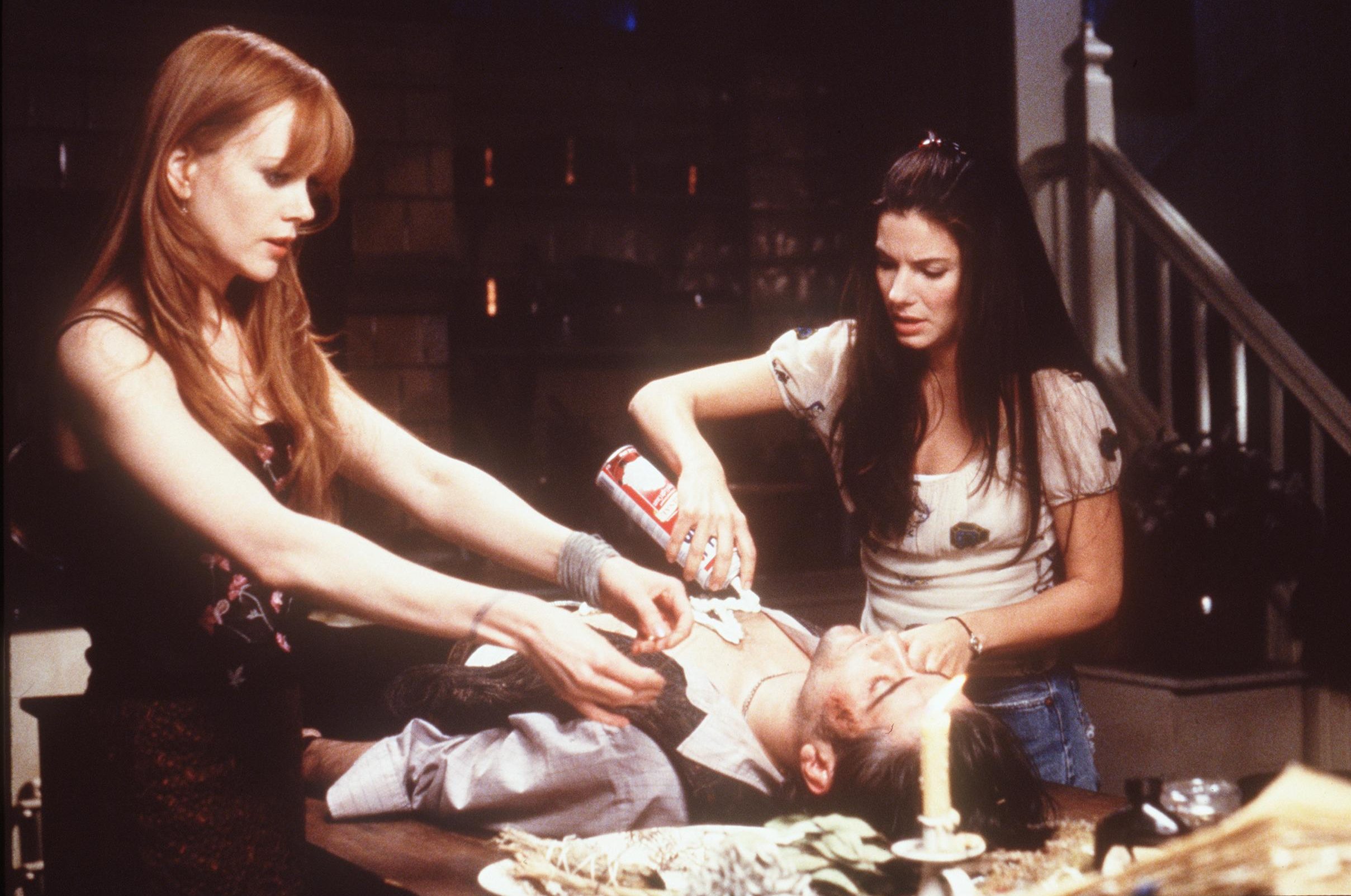
Practical Magic
For better or worse, this 1998 film is basically the celluloid equivalent of a pumpkin spice latte. It’s silly, sentimental, a little corny, but it’s pretty and it feels seasonally appropriate, not just because it’s about a couple of witches, but also because it’s got that chunky sweater, autumn in New England feel. Sandra Bullock and Nicole Kidman star as sisters Sally and Gillian Owens who, despite their earth mama/sex goddess magic, both suffer from romantic tribulations that can be traced back to an old family curse. The tremendous Stockard Channing and Dianne Wiest play the sisters’ delightfully batty aunts whose caftans, scarves, parasols, Nancy-Meyers-by-way-of-Morgan-le-Fay kitchen and general disdain for conventionality are all ironclad #witchgoals. If you want a comforting dose of romantic charm in your spooky season viewing, you could do a lot worse than Practical Magic.
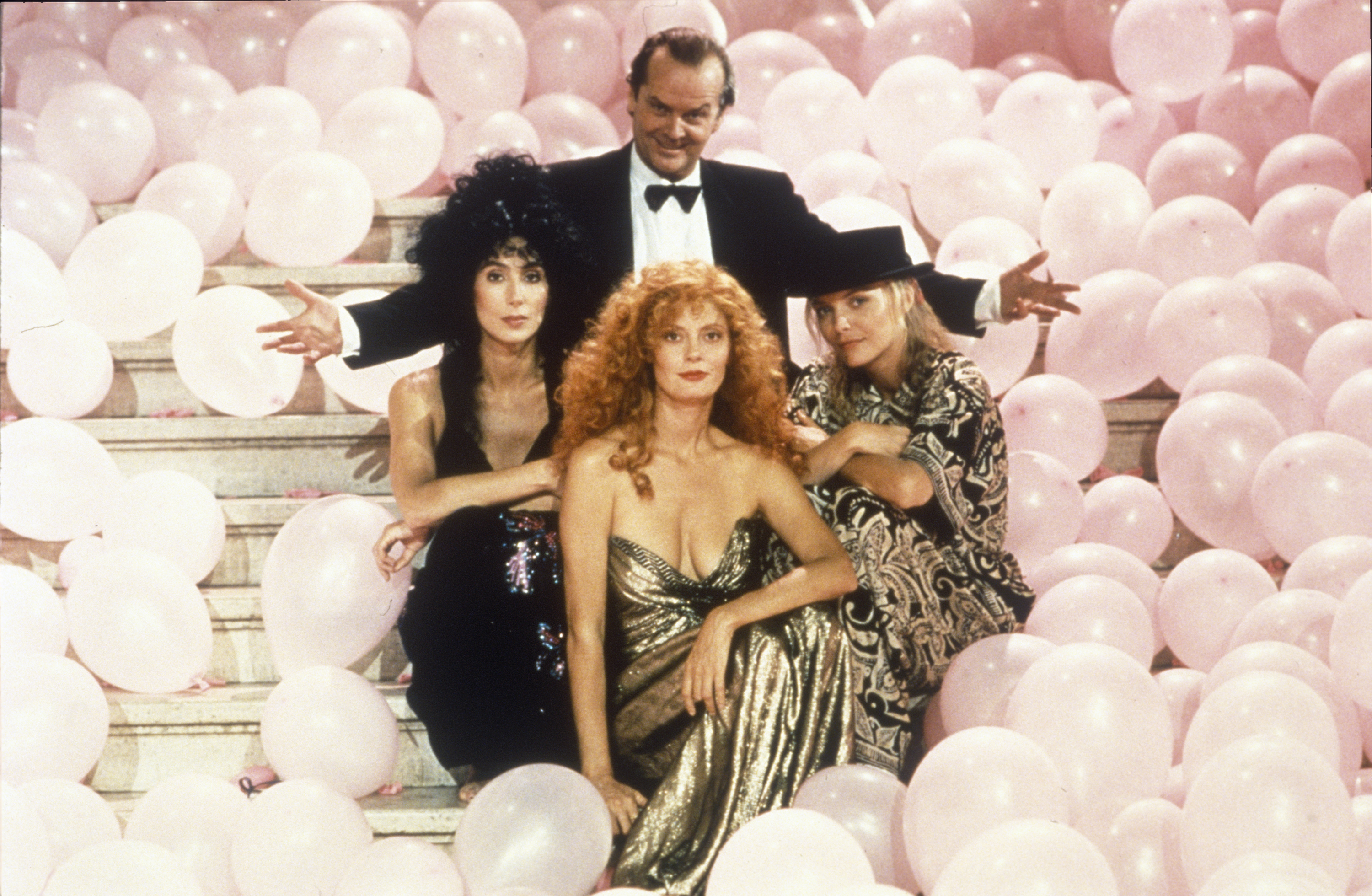
The Witches of Eastwick
I could go on for days about the differences between this 1987 film and John Updike’s 1984 novel—a personal problematic fave. But despite dialing back the novel’s more explicit witchcraft, among other significant changes, director George Miller’s adaptation is still a perennial delight, thanks primarily to its superstar cast. Cher, Susan Sarandon and Michelle Pfeiffer star as a trio of single girlfriends who manage to unwittingly summon a dark stranger, Jack Nicholson’s Daryl Van Horne, to their small New England town. Each woman has her own unique talents and troubles which Daryl, who may or may not be the devil himself, helps them master—mostly by sleeping with them.
Interestingly, the film takes Updike’s snide satire of feminism and turns it on its head slightly. Via Nicholson’s virtuosic scene stealing we get a phantasmagoric spoof of a particular breed of misogynist: the kind of guy who puts women on a pedestal only to reveal his operatic resentment when they disappoint him.
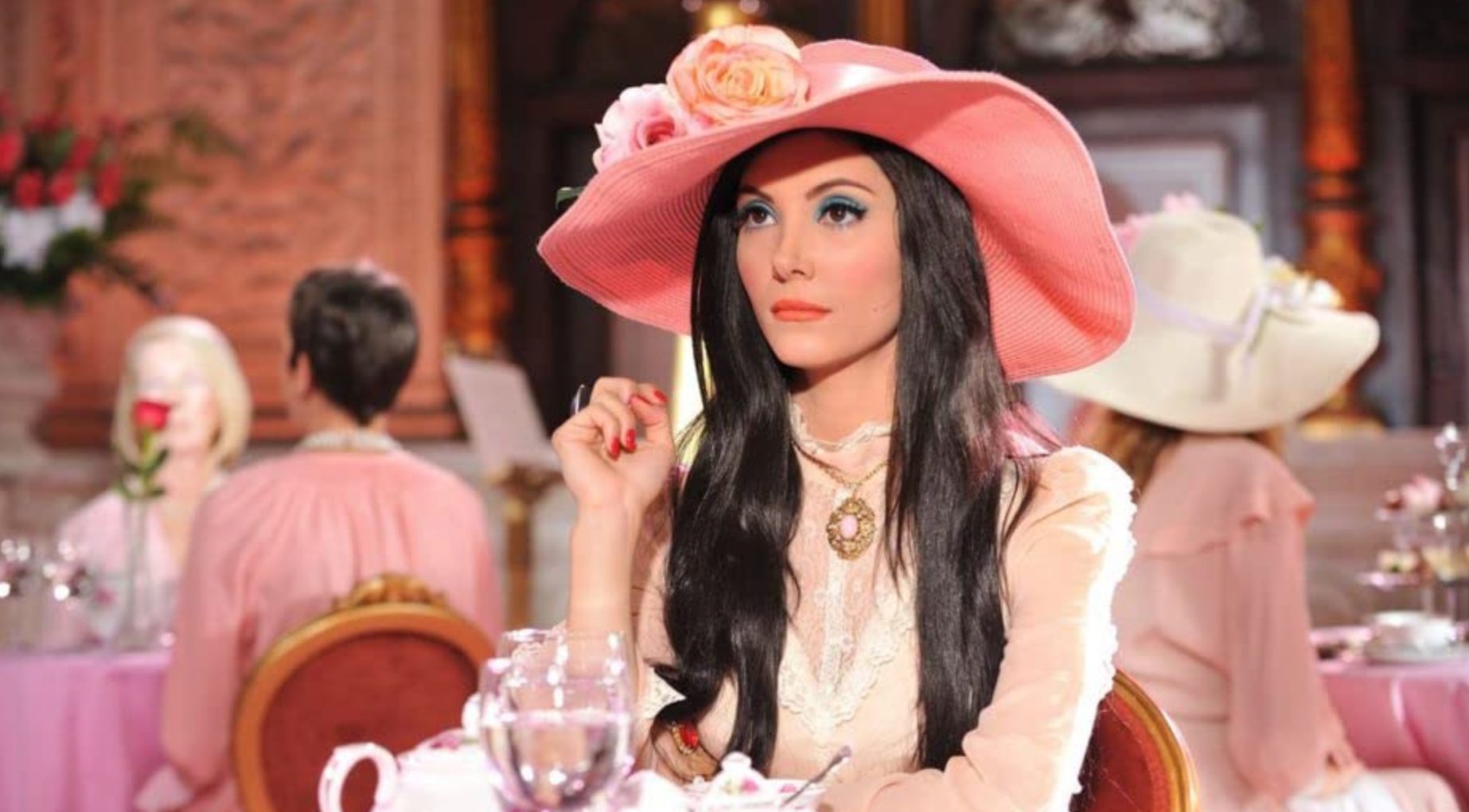
The Love Witch
Director Anna Biller’s dazzling 2016 indie is an homage to 1960s B-movies and Age of Aquarius-era occultism. The aesthetic is high camp, all saturated colors and purposefully anachronistic style. But amid all the witchy trappings—spell casting and naked rituals in the woods—there’s a clever examination of gender roles. Elaine (Samantha Robinson), the beautiful young Wiccan at the center of the film, is desperate to be loved by men and devotes all of her abilities, both as a witch and as a woman, to attracting and pleasing them. And the results are tragic. Biller’s gaze is resolutely feminine; the artificiality of the film’s production design mirrors the artifice of Elaine’s feminine self-presentations—her aqua eye shadow, her immaculately lacquered nails, her cascading ink black wig. The Love Witch may look like a candy-coated bag of tricks and treats, but there’s real substance to this potent brew.

The Witch
Teen witches, love witches, campy witches; sexy sorceresses and earthy wise women; witchcraft as empowerment, magic as a superpower. That’s all fun, but Robert Eggers’s 2015 horror film takes us back to a time when witchcraft meant real terror. In The Witch, it’s the 1630s and a family of Puritan settlers has been cast out of their New England colony to fend for themselves in the wilderness. Soon after establishing a small farm at the edge of a dark, untamed forest, tragedy strikes when the youngest member of the family, baby Samuel, disappears. Fear soon sets in, as patriarch William (Ralph Ineson) begins to suspect eldest daughter Thomasin (Anya Taylor-Joy in her first film role) of witchcraft.
Eggers’s film is a masterclass in ambient dread. Unlike The Crucible, which also used Puritan witchcraft superstitions as a metaphor for paranoia, the witch here is real. But the film’s terror comes from its bleak atmosphere, its sense of isolation and the severity of William’s loveless, unforgiving theology as much as from its disturbing imagery. Still, I defy anyone who says The Witch doesn’t have a happy ending!
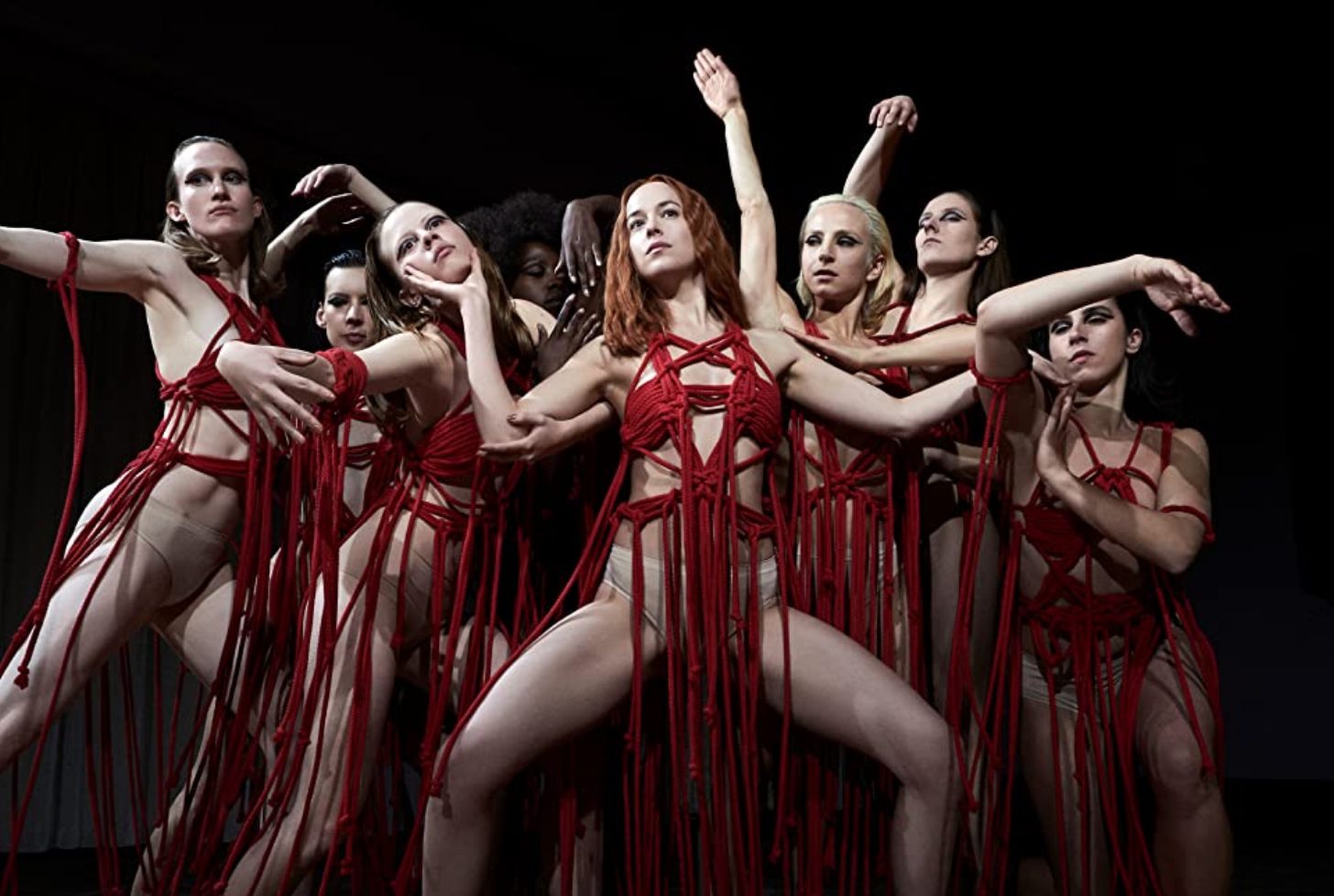
Suspiria (2018)
I fully accept that it is a controversial move to include Luca Guadagnino’s 2018 remake and not the 1977 original directed by Dario Argento, the master of Italian horror. Argento’s film is a classic, and I certainly wouldn’t discourage anyone from seeking it out. But while the original is a visual feast of psychedelic design and camp frights, Guadagnino’s Suspiria has an essential witchiness that the earlier film lacks. The director trades Argent’s saturated palette for a dingier, muddier look, setting his film’s sinister dance academy against the backdrop of the political unrest of 1970s Berlin. Dakota Johnson stars as Susie, an American dance prodigy who finds herself at the mercy of a coven of witches lead by the mysterious Madame Blanc (Tilda Swinton).
Guadagnino is playing—to various degrees of success—with heavy themes here: motherhood, Berlin’s post-war trauma. But I like to think of Suspiria as the dark inverse of Call Me by Your Name. While Guadagnino’s Oscar-winning 2017 queer romance is drenched in sunshine and suffused with a kind of youthful masculine ease, Suspiria is grim, dirty, violent, visceral, with an almost entirely female cast. Characters are constantly chewing; bones break, blood—and other fluids—flow, and Guadagnino’s gaze never looks away. The young men in Call Me by Your Name are intellectuals in love; they’re all heart and head. The women of the Markos Dance Academy use their bodies and the bodies of others, in all their unseemly messiness, to grasp for power. Be warned: this is one is all about the gore and body horror! But isn’t finding beauty in the grotesque kind of what witchiness is all about?














